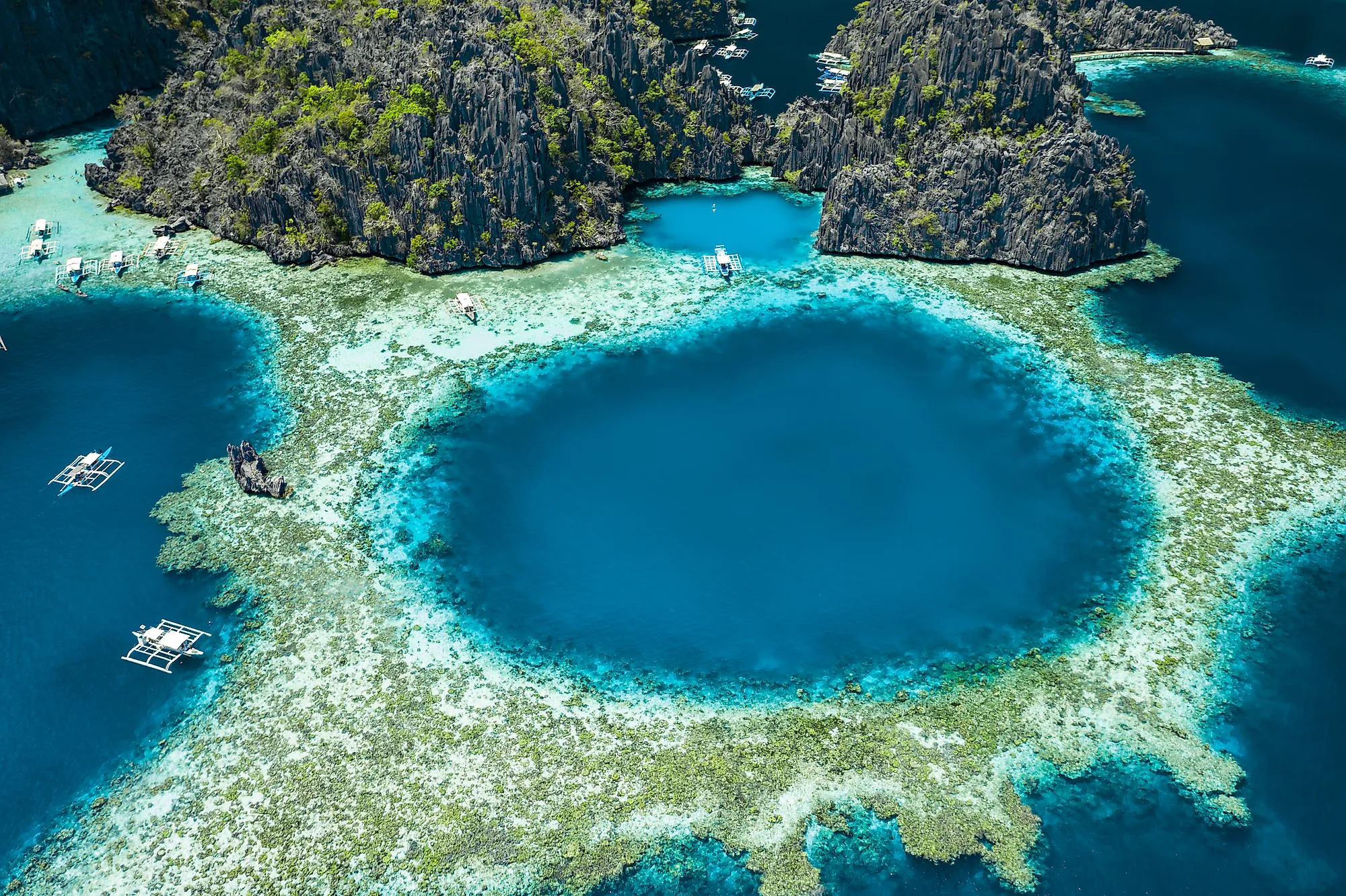
What Is A Lagoon?
- Venice is one of the most famous lagoons in the world, but many don't known it is a lagoon at all
- There three types pf natural lagoons: coastal, atoll and river-mouth (often also coastal).
- The water in a lagoon is almost always brackish, meaning partly salt water and partly fresh water - this is especially true of coastal lagoons
The word lagoon comes from the Italian laguna, meaning a shallow pond or pool. In geography, the term refers to a coastal body of water that is partly cut off from the open sea by a natural barrier such as a sandbar, reef, or chain of small islands. This sheltered water is typically shallow and only partly connected to the larger ocean beyond. Because the word is often used loosely in tourism and everyday speech, not every place labeled a “lagoon” meets this definition, which can make true lagoons easy to misidentify. As features created by coastal barriers, they occur almost exclusively along shorelines.
Classification Of Lagoons
Lagoons are generally grouped into two main types: coastal lagoons and atoll lagoons. Coastal lagoons form along continental shorelines where sandbars, barrier islands, or reefs enclose shallow water. Atoll lagoons develop inside ring-shaped coral reef structures in tropical seas. Some researchers also recognize lagoon systems within larger barrier reefs, but most classifications fall under these two broad categories.
Coastal Lagoons
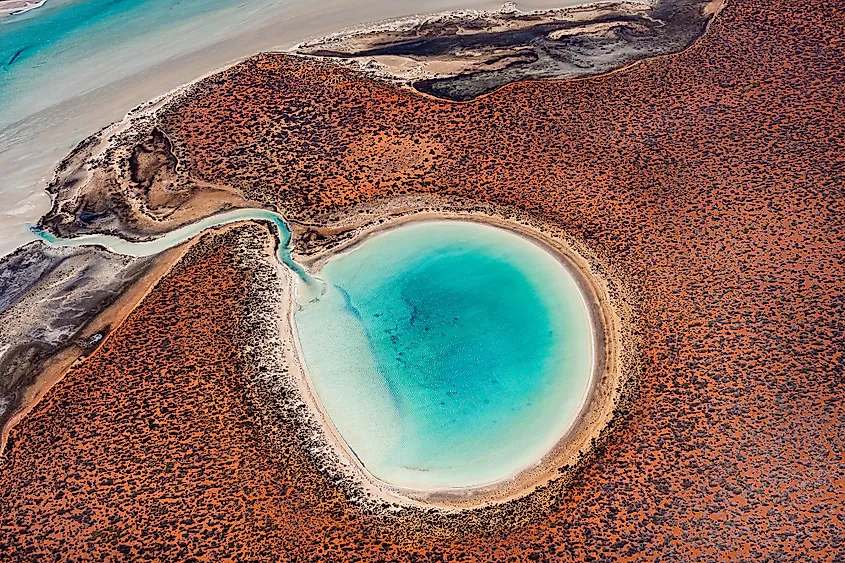
A coastal lagoon in the Shark Bay Area of Western Australia.
Coastal lagoons form along shorelines where a natural barrier, such as a sandbar, barrier island, spit, or reef, partly separates shallow water from the open sea. They are the most widespread type of lagoon, especially in regions with low to moderate tidal ranges and broad, gently sloping coastal plains. Because they are shallow and easily reshaped by storms, sedimentation, and shifting currents, coastal lagoons are considered geologically young and often short-lived features. Their depth and salinity can fluctuate with the tides, which may expose broad mudflats at low tide and allow seawater and marine life to enter at high tide. Coastal lagoons form primarily through the buildup of coastal barriers by waves and currents; once a barrier encloses part of the shoreline, the water behind it becomes the lagoon.
Many lagoons contain brackish water—a mix of freshwater and seawater—because their connection to the ocean is limited. Salinity in these environments varies widely. Some lagoons become nearly fresh when rivers or rainwater dominate, while others grow hypersaline in dry climates where evaporation outpaces inflow. In coastal lagoons, tides can introduce pulses of seawater, but the degree of saltiness depends on the size of the inlet, the shape of the lagoon, and seasonal changes in rainfall and runoff.
Although coastal lagoons occur along the Gulf and Atlantic coasts of the United States, they are found on coastlines around the world. Large concentrations appear along the Mediterranean, in Mexico and Central America, throughout Southeast Asia, around Australia, and along parts of South America—regions with broad coastal plains and gentle offshore slopes that favor lagoon formation.
Atoll Lagoons
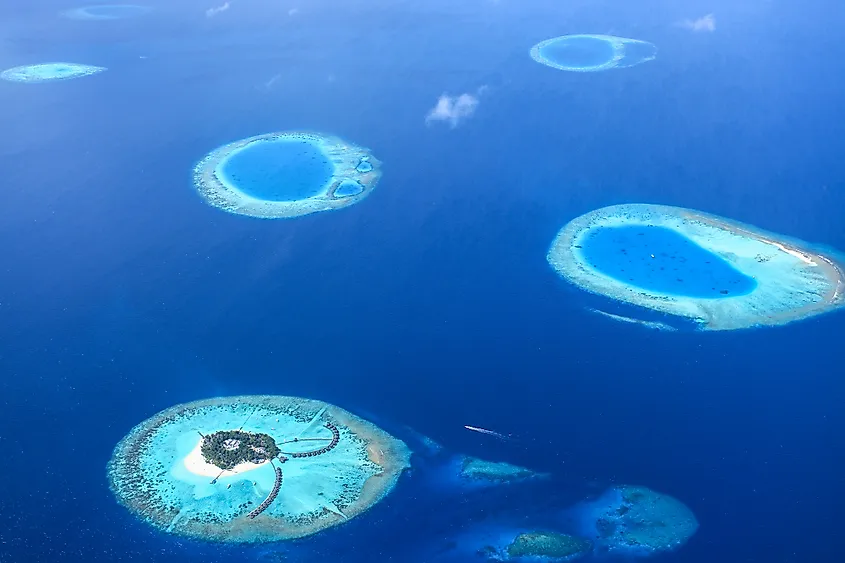
Atoll lagoons form in a different way from coastal lagoons, developing inside ring-shaped coral reef systems that surround a central basin. These reefs grow around volcanic islands in tropical oceans. Over hundreds of thousands of years, the volcanic island slowly subsides as the underlying crust cools and sinks. Coral continues to grow upward toward the light, eventually forming a circular or oval reef while the island itself disappears below sea level. The enclosed water left behind becomes the atoll lagoon. Atolls are especially common in the tropical Pacific and Indian Oceans, where warm, clear water supports extensive coral growth.
River-Mouth Lagoons
River-mouth lagoons form where coastal rivers meet the sea along low-lying, sandy shorelines. In these settings, waves and currents build temporary sand barriers that partially block the river’s flow, creating shallow basins with water that ranges from fresh to brackish depending on how much seawater enters. These systems occur in many parts of the world, and are especially well developed in New Zealand and across several islands of the South Pacific.
Artificial Lagoons
Not all lagoons are natural; many are built artificially for resorts and residential developments. These engineered basins provide calm, controlled water and can create beach-style shorelines far from the coast. Developers often fill them with freshwater or treated low-salinity water, making them appealing for swimming and recreation. Because they are designed for human use, artificial lagoons support little natural wildlife, though birds and other species may occasionally colonize the edges of these constructed environments.
Examples Of Well-known Lagoons Around The World
Venetian Lagoon
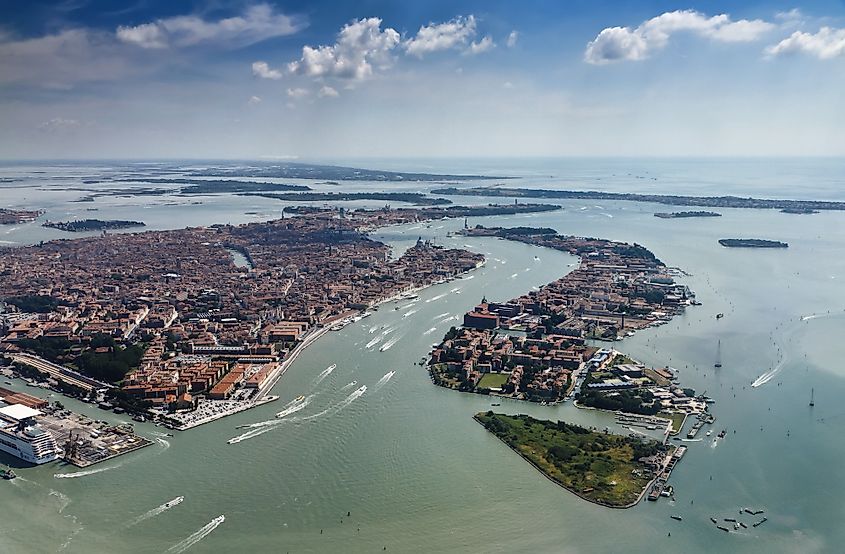
The city of Venice, Italy, sits within the Venetian Lagoon, a shallow coastal basin separated from the Adriatic Sea by a series of barrier islands. While Venice is famous for its network of canals, these waterways are part of a much larger lagoon system that has sheltered the city for more than a thousand years. The lagoon is shaped by sandbars, mudflats, and human engineering, and contains roughly 118 islands on which the historic city and its surrounding communities were built.
Nanuya Levu, Fiji
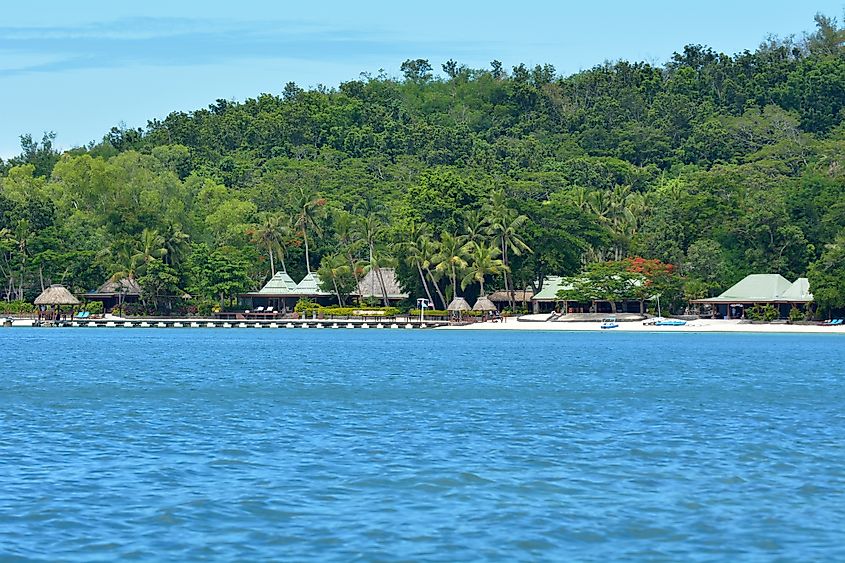
In Fiji’s Yasawa Islands, the sheltered waters around Nanuya Levu and its neighboring islands are often referred to as the “Blue Lagoon.” Although not a true lagoon in the strict geographic sense, the calm, clear water and surrounding coral reefs have made the area one of Fiji’s most popular destinations. Parts of this coastline served as a filming location for the 1980 movie The Blue Lagoon, helping cement the region’s international reputation.
Bora Bora
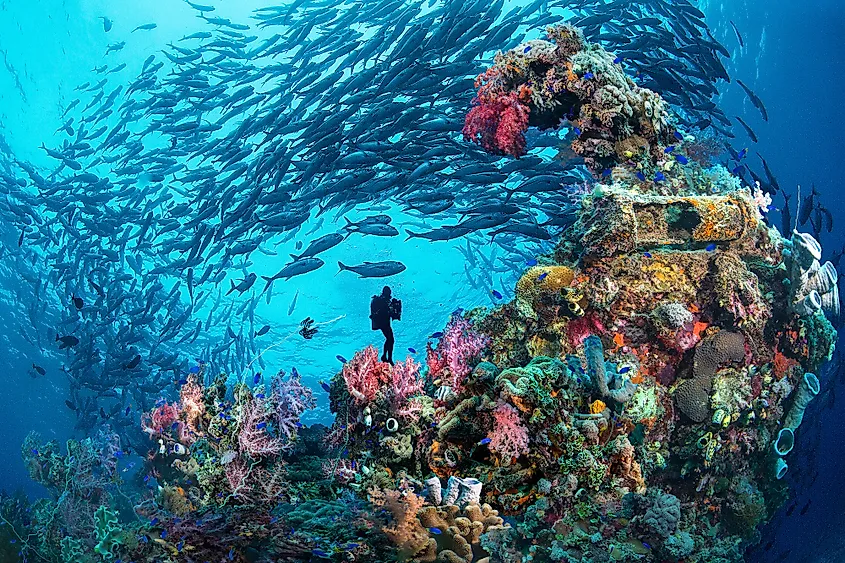
Bora Bora in French Polynesia is encircled by a broad barrier reef that encloses a shallow, turquoise lagoon. Narrow passes in the reef allow limited exchange with the open Pacific, creating calm, clear water that supports vibrant coral communities and an abundance of marine life. This barrier-reef system is one of the most recognized lagoon environments in the tropical Pacific.
Lighthouse Reef, Belize
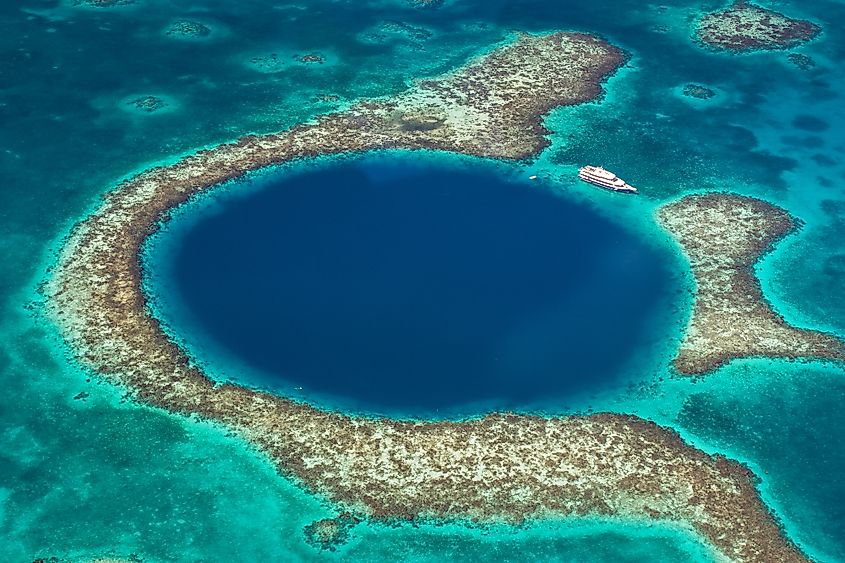
One of Belize’s most striking marine features is the Great Blue Hole, a nearly circular marine sinkhole located within the Lighthouse Reef Atoll. Rather than a lagoon, it is a collapsed limestone cavern whose vertical walls plunge more than 120 meters into the seafloor. The surrounding reef forms a bright ring of shallow water, sharply contrasting with the deep indigo of the sinkhole and making it one of the most iconic dive sites in the world.
Chuuk Lagoon, Micronesia

Chuuk Lagoon—formerly known as Truk Atoll—is one of the world’s largest and best-known atoll lagoons. Located in the western Pacific within the Federated States of Micronesia, it is enclosed by a vast barrier reef dotted with more than 40 islands. Today the lagoon is famous among divers not only for its coral habitats but also for the extraordinary concentration of shipwrecks and aircraft resting on its seafloor. These remains date from World War II, when Truk served as one of Japan’s most important naval bases in the central Pacific. Many of the wrecks remain remarkably well preserved, creating one of the planet’s most significant underwater heritage sites.
Lake Piso, Liberia
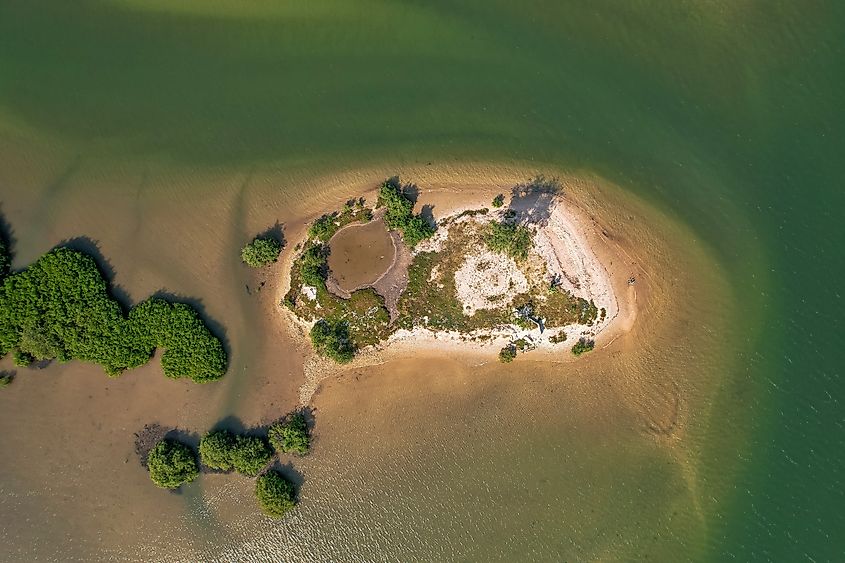
Lake Piso in Liberia is the country’s largest lagoon, a broad coastal basin connected to the Atlantic Ocean by a narrow inlet. Its salinity and water level shift with the tides and with seasonal changes in rainfall. During dry periods, stronger marine influence makes the lagoon more brackish, while heavy rains and river inflow dilute the salt content and create fresher conditions.
Lycian Lagoon
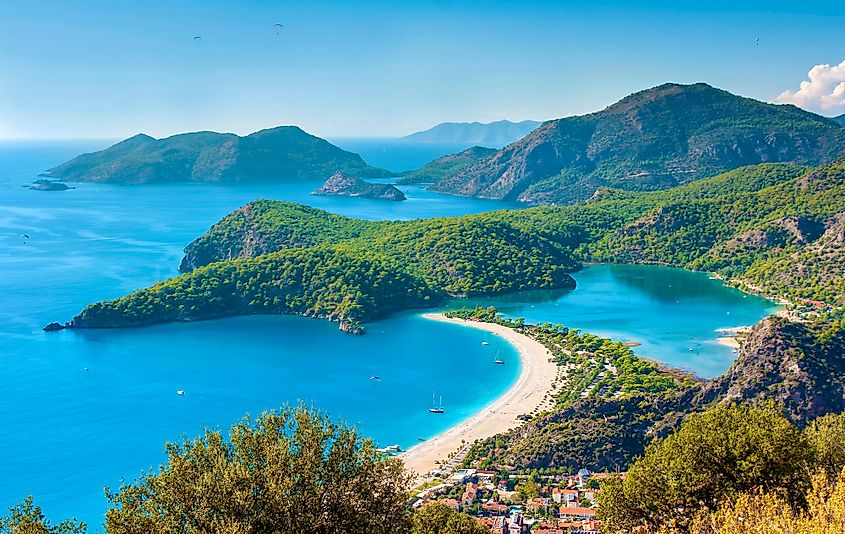
Along Turkey’s Lycian Coast, the sheltered waters around the island of Kekova form a protected inlet often described as a lagoon, although it functions more like a naturally enclosed bay. This calm stretch of water has served as a safe anchorage for millennia and was used by Greek and Roman sailors navigating the eastern Mediterranean. Like many enclosed coastal basins, its protected conditions made it an ideal natural harbor.











